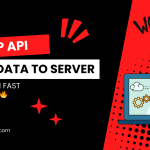The Best Fluffy Pancakes recipe you will fall in love with. Full of tips and tricks to help you make the best pancakes.
The Significance of Edge Computing in IoT
Internet of Things (IoT) technology has transformed the way we interact with the world around us, enabling seamless connectivity and data exchange between devices. One crucial aspect of IoT systems is the ability to process data efficiently and make informed decisions in real-time. This is where edge computing plays a vital role.
Understanding Edge Computing
Edge computing involves processing data closer to the source, i.e., at the edge of the network where the data is generated. Unlike traditional cloud computing, which involves sending data to a centralized server for processing, edge computing allows for data processing to occur locally on devices or edge servers. This proximity to the data source reduces latency and enables faster response times.
Enhancing Real-time Data Processing
By leveraging edge computing in IoT systems, organizations can enhance real-time data processing capabilities. Devices at the edge can analyze incoming data streams instantaneously, identify patterns, and trigger automated actions without the need to wait for data to be sent back and forth to a distant cloud server. This immediacy is critical in applications where split-second decisions can make a significant impact, such as industrial automation, autonomous vehicles, and healthcare monitoring.
Empowering Decision-making
Edge computing not only accelerates data processing but also empowers decentralized decision-making in IoT environments. With the ability to process data locally, devices can autonomously make decisions based on predefined rules or machine learning algorithms. This distributed intelligence reduces reliance on centralized servers and enhances overall system resilience. Additionally, edge computing enables data to be filtered and prioritized at the source, ensuring that only relevant information is transmitted to the cloud for further analysis or storage.
Conclusion
As IoT ecosystems continue to expand and generate vast amounts of data, the role of edge computing in enabling real-time data processing and decision-making becomes increasingly crucial. By harnessing the power of edge computing, organizations can unlock new opportunities for innovation, efficiency, and responsiveness in their IoT deployments.




